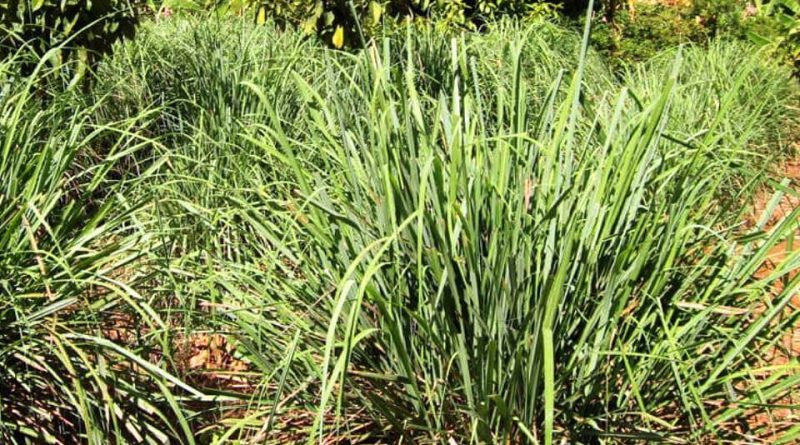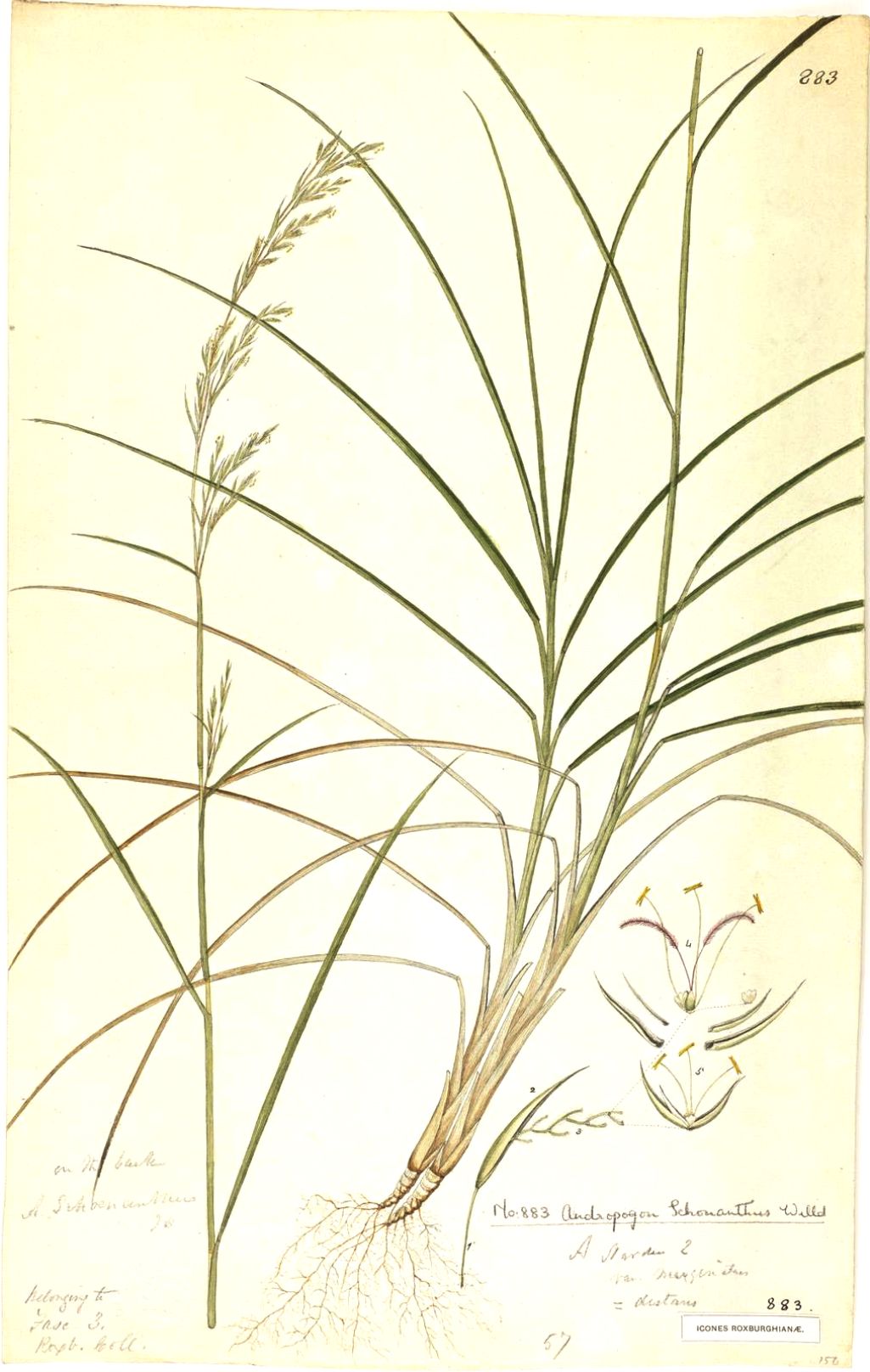Cymbopogon schoenanthus
Cymbopogon schoenanthus
Camel grass (Cymbopogon schoenanthus Spreng.) Is a herbaceous species belonging to the Poaceae family.
Systematics –
From the systematic point of view it belongs to the Eukaryota Domain, Kingdom Plantae, Magnoliophyta Division, Liliopsida Class, Poales Order, Poaceae Family, Panicoideae Subfamily, and therefore to the Cymbopogon Genus and to the C. schoenanthus Species.
The terms are synonymous:
– Andropogon circinnatus Hochst. ex Steud .;
– Andropogon eriophorus Willd .;
– Andropogon giganteus Fenzl ex Steud .;
– Andropogon jwarancusa Prossimus (A.Rich.) Hack .;
– Andropogon jwarancusa sennarensis (Hochst.) Hack .;
– Andropogon laniger Munro;
– Andropogon lanigerum Desf .;
– Andropogon mascatensis Ghent .;
– Andropogon nardoides Nees;
– Andropogon Prossimus Hochst. ex A.Rich .;
– Andropogon schoenanthus L .;
– Andropogon sennarensis Hochst .;
– Andropogon versicolor Nees ex Steud .;
– Cymbopogon arabicus Nees ex Steud .;
– Cymbopogon circinnatus (Hochst. & Steud.) Hochst. formerly Hack .;
– Cymbopogon citriodorus Link;
– Cymbopogon Prossimus (Hochst. Ex A. Rich.) Stapf;
– Cymbopogon Prossimus (Hochst. Ex A.Rich.) Chiov .;
– Cymbopogon sennarensis (Hochst.) Chiov .;
– Cymbopogon versicolor (Nees ex Steud.) W. Watson;
– Gymnanthelia proxima (A.Rich.) Andersson;
– Gymnanthelia sennarensis (Hochst.) Schweinf. & Asch .;
– Lagurus schoenanthus (L.) Steud .;
– Sorghum schoenanthus (L.) Kuntze;
– Trachypogon schoenanthus (L.) Nees.
Etymology –
The term Cymbopogon comes from the Greek κύμβη cýmbe cup, cup, boat and πώγων pógon barba: reference to the arrangement of the hairy-looking cobs.
The specific schoenanthus epithet is unclear.
Geographic Distribution and Habitat –
Camel grass is a herbaceous plant from southern Asia and northern Africa and is present in an area ranging from North Africa, Mauritania to Egypt, through Arabia and India.
Its habitat is that of open places in arid, stony soils and sub-desert scrubland.
Description –
Cymbopogon schoenanthus is a perennial, aromatic and compact herb, with evergreen tufts, which grow about 30-60 cm.
The stems, which tend to fold, derive from a rhizomatous root.
The leaves are simple, greenish in color, with entire margins and linear in shape. The leaf blades have evident parallel veins.
Cultivation –
Cymbopogon schoenanthus is harvested in its natural state and is also occasionally grown for its essential oil which is used in medicine and perfumery.
This plant grows in the driest areas of the tropics, subtropics and warm temperate zones. It grows best in dry to moist, well-drained soil and in a location in full sun. Plants resume growth very quickly when the first rains arrive after a dry period.
Propagation can take place by seed either directly on the ground, covering the seed, or by preparing the seedlings in the nursery. In this case the transplant takes place when the plants have grown enough to perform this operation.
In situ sowing, it often results in heavy weed infestation.
Another method of propagation can be that of the division of clumps. This operation should preferably be done every year also to avoid excessive plant density.
The offshoots of this species often fail to free themselves.
Customs and Traditions –
Camel hay, also known as camel grass, fever grass, geranium grass or western Indian lemongrass, is a plant already well known and esteemed by the ancient Greeks and Romans and its oil is still sometimes sold in markets locals.
In addition to some food uses it is widely used for medicinal purposes or to prepare herbal teas.
All parts of the plant are aromatic, so there is a variety of medicinal uses.
The inner core of the rhizome is eaten as an aphrodisiac.
An infusion is prepared from the inflorescence which is drunk in the treatment of fevers. The inflorescence is also used to cause abortion.
The crushed flowers, or the ashes of the plant, are applied to the sores caused by the Guinea worm (Dracunculus medinensis Linnaeus, 1758.
The herb is used to treat snake bites.
The leaves, pounded with a little water, are used to relieve body pain.
Smoking from burning weed is said to dispel temporary manic symptoms.
Among other uses we mention:
– agroforestry uses; the plant is grown in South America to control soil erosion;
– from the distillation of the roots and leaves a perfumed oil, “camel grass oil” is produced, even if this species is not a major source of cymbopogon oils and its oil is chemically distinct from lemongrass oil;
– the oil is sometimes used in perfumery;
– grass is commonly used to cover thatched roofs; [46
– the wells dug in the sandy soils are lined with the stalks of the grass, while it is also shredded and mixed with clay to build huts, used for zaanaa mats.
Preparation Method –
Cymbopogon schoenanthus is often used to prepare common herbal teas.
The oil (called lemongrass oil or camel grass oil) is also used as a tonic and scented additive in personal care and cosmetic products such as hair dye, shampoo, conditioner, moisturizer, lotion, bath oil, exfoliant , for anti aging treatment and acne treatment.
Guido Bissanti
Sources
– Acta Plantarum – Flora of the Italian Regions.
– Wikipedia, the free encyclopedia.
– Useful Tropical Plants Database.
– Conti F., Abbate G., Alessandrini A., Blasi C. (edited by), 2005. An annotated checklist of the Italian vascular flora, Palombi Editore.
– Pignatti S., 1982. Flora of Italy, Edagricole, Bologna.
– Treben M., 2000. Health from the Lord’s Pharmacy, Advice and experiences with medicinal herbs, Ennsthaler Editore.
Warning: Pharmaceutical applications and alimurgical uses are indicated for informational purposes only, they do not represent in any way a medical prescription; we therefore decline all responsibility for their use for curative, aesthetic or food purposes.


